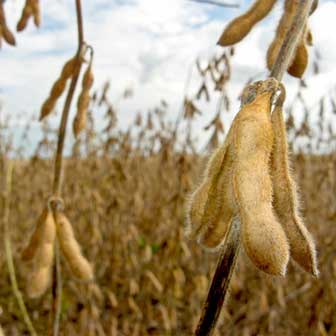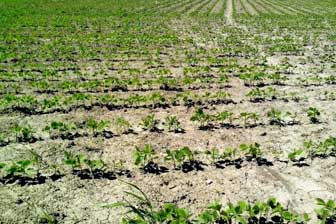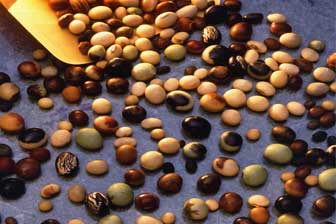Facts about Soy Beans
Posted by Admin / in Science Facts

The History of Soy Beans
- Soybeans have been grown in China for 1000's of years.
- Soybeans were introduced to other Asian countries through trading. The use of soybeans in Egypt and the Middle East is documents over 3500 years ago.
- A German named Englebert Kaempfer brought soybeans to Europe in 1712.
- In the early years of the establishment of the United States farmers attempted to grow soybeans.
- Starting in 1896 with the encouragement of George Washington Carver, the United States Department of Agriculture started experimenting with soybeans.
- George Washington Carver discovered that edible oil could be extracted from soybeans. George Washington Carver convinced farmers to rotate their cotton crops to grow soybeans, peanuts and sweet potatoes to replenish the nitrogen in the soil.
- In the early 1900's William Morse expanded interest in growing soybeans in the United States through research, discovery and writing books about soybeans. In the late 1920's Williams Morse along with Palemon H. Dorsett traveled to Asia collecting 1000's of varieties of soybeans.
- Henry Ford, who had a strong interest in agriculture, encouraged his car designers to utilize soy beans. By the early 1940's the Ford motor company used soy bean oil instead of petroleum to make some of the plastics in their cars. In 1941, Ford was able to make a "soybean car" with body panels made from soybean plastic. The car was never mass-produced, but proved the capability of soybeans.
Facts about Soy Beans
- Naturally, soybeans are toxic for people to eat. Over many years farmers have developed a process to remove the toxins from soybeans so people are able to enjoy foods made with soy.
- Soy beans are processed into a large variety of products. The soy bean has similarities to a vegetable, but it is considered a protein. Some products are made directly from the soy bean, but others are made from the oil squeezed out of soy beans.
- For people who are allergic to milk, milk made with soy beans offers a healthy alternative.
- Soy beans boiled in their green pods, which are served with salt are known as edamame.
- Vegetarian meat, known as tempeh, is made in a cake of slightly fermented soy beans.
- Soy beans are used to replace the wax in crayons. Soybean wax is excellent for adding the colors needed for crayons.
- A popular use of soy beans is for making printing ink. Soy beans can replace traditional oil-based printing ink, with a more environmentally-friendly ink.
- Soy beans are used to make bio-diesel fuel. It takes about one bushel of soy beans to make a gallon and a half of bio-diesel fuel.
- As mentioned in the history section, plastic can be made from soybeans. The soybean oil replaces petroleum-based oil in the plastic mix.

Soy milk is popular with people who cannot tolerate cow's milk.

Vegetarian-friendly hamburgers can be made from soy beans.
Facts about Growing Soy Beans
- Although farming around the world changes frequently because of technology and weather patterns, the United States is currently the large producer of soy beans in the world with nearly 40 percent of the total supply. Brazil, Argentina and China follow the U.S. in total soy bean production.
- Soybeans need direct sunlight to grow. The number of days it takes to fully grow a mature soybean plant is directly related to the number of sunny days.
- Soybeans are harvasted when the plants turn completely brown.
- Soybean buyers check the moisture level in the soybeans they purchase. If the soybean plants are harvasted when they are still slightly green, the soybeans will have a higher level of moisture. Buyers pay less for beans with higher moisture.
- In the Northern Hemisphere (the United States and China) farmers plant soy beans between April and June. Soy beans are harvested from September through November.
- In Brazil soy beans are typically planted between August and December. Soy beans are harvested from February through May.
- In Argentina farmers plant soy beans between October and December. They harvest soy beans between April and June.
- The amount of soy beans harvested per acre has increased over the last 50 years in the United States and other countries. In 1960 the yield for soy beans was about 24-25 bushels per acre. Currently farmers collect 30-40 bushels per acre on average. In the best growing location, Iowa, farmers can grow over 50 bushels of soy beans per acre.
- Each year farmers grow well over 3 billion bushels of soy beans each year in the United States alone.
- Most planted crops like wheat and corn remove nitrogen from the soil. Soybeans are able to remove nitrogren from the air and place it in the soil. Farmers rotate their crops to replace nitrogen in the soil.
- When corn is grown in a field every year, insects that attack the corn plants and roots grow stronger each year. Farmers rotate their crops by growing soybean plants every other year or two out of four years to help clear out the bugs that attack corn.

The United States is the largest producer of soy beans in the world.

In North America, soy beans are planted between April and June.

